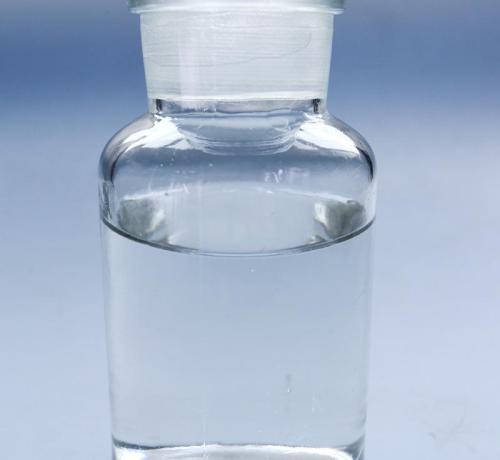Glacial acetic acid (glacial acetic acid, anhydrous acetic acid)

| Physical and chemical properties | Appearance and odor status: transparent liquid, allowing mild turbidity produced by aluminum packaging , pungent acetic acid smell | ||
| Toxicity: non-toxic | Flammability: combustible | ||
| Density: 1.05 | Volatility: Volatile | ||
| Corrosivity: easy to corrode | Boiling point: 117.9℃ | ||
| Decomposability: not easy to decompose | Melting point: 16.6℃ | ||
| Acidity and alkalinity: acidity | Hygroscopicity: moisture absorption | ||
| Spontaneous ignition point: 463℃ | Flash point: 39℃ | ||
| Solubility: soluble in organic solvents such as water, ethanol, ether, carbon tetrachloride and glycerin. It solidifies into ice-like crystals at low temperatures, commonly known as glacial acetic acid. The volume expands during solidification, which may cause the container to rupture | |||
| Various numbers | CAS:64-19-7 | HS:29152119 | EINECS: 200-580-7 |
| Uses | Acetic acid is one of the most important organic acids. It can be mainly used to produce vinyl acetate, acetic anhydride, acetate and cellulose acetate. Acetic acid can also be used to synthesize acetic anhydride, diethyl malonate, ethyl acetoacetate, haloacetic acid, etc. It can also be used to produce drugs such as aspirin, and it can also be used to produce acetate. It is widely used in pesticide, medicine and dyestuff, photographic medicine manufacturing, textile printing and dyeing and rubber industry. In the food industry, acetic acid is used as an acidulant, flavoring agent and perfume. When making vinegar, acetic acid is diluted with water to a concentration of 4-5%, and various flavoring agents are added to obtain edible vinegar. Acetic acid acts as a preservative. | ||
| Hazard category | 8 types of acidic corrosive liquid | ||
| Fire-fighting measures | Use water spray, dry powder, alcohol-resistant foam, carbon dioxide, and extinguish the fire. Keep the containers in the fire scene cool with water. Use misty water to disperse the vapor, drive away the leaked liquid, and make the dilution into a non-flammable mixture. And spray with water to stop the leakage personnel. | ||
| Emergency treatment | Skin contact: rinse with water first, then wash thoroughly with soap; eye contact: eye irritation, rinse with water, then wipe with a dry cloth, severe cases need to be sent to the hospital for treatment; inhalation: if inhaling the vapor, the patient will be removed from the contaminated area. Place to rest and keep warm; Ingestion: Rinse mouth immediately after ingestion, give emetics to induce vomiting, and rush to hospital for treatment. | ||
| Packaging, storage, transportation | Packed in plastic drums, 200kg/drum, stored in a cool, ventilated warehouse. Keep away from fire and heat sources. The storage temperature should be kept above 16°C in the freezing season to prevent solidification. Keep the container tightly closed. It should be stored separately from oxidants and alkalis, and avoid mixed storage. Use explosion-proof lighting and ventilation facilities. It is forbidden to use mechanical equipment and tools that easily generate sparks. The storage area should be equipped with leakage emergency treatment equipment and suitable storage materials. Transported as dangerous goods, the tank (tank) truck used during transportation should have a grounding chain. |
||
Next product: Triethylamine (N,N-Diethylethylamine)

